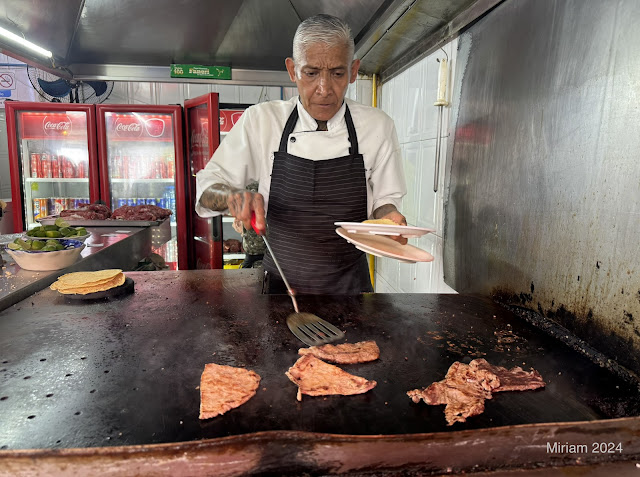A Good One
 |
| Case in the Clinic by E.C.R. Lorac, first published in 1941. |
Featuring Police Inspector Macdonald, this murder mystery has a good plot, well-done suspense, and mostly likable characters. The inspector is thorough and has a sense of fairness to the suspects, as well as being pretty clever. The author wrote other detective novels about this character, and I may eventually read them. Several are available in Kindle editions — at the moment the prices are low, too.
Always looking for interesting food descriptions, I was impressed here because the novel is so tightly plotted that mentions of food were usually part of a witness explaining things. For example, this description of the last meal before the death of one of the victims:
“‘Dyspeptic my eye!’ grunted Grendon. ‘Nothing dyspeptic about the padre. He enjoyed his food. Did me good to see him tucking in, and no nonsense about it. Lovely duck it was, too. Where’d I got to? I know. We were on the terrace, just had coffee. Good French coffee, a bit bitter, with that suggestion of something akin to garlic you always get in continental coffee, and Lee Gordon was chatting about his seedlings.’” (p. 8)
Or this elderly woman’s description of the routine at a boarding house where one victim lived:
“Our other residents, Miss Fellows, Miss Brace, Miss Dance, Mrs. Paine and Miss Deeley are all ‘working women,’ as they say nowadays. They return for luncheon at half-past one to two on Saturdays. It makes it very late for the midday meal, and I always fall back on a cup of Oxo and a biscuit at half-past twelve. Woolworth’s cheese biscuits. So savoury!” (p. 146)
A Not-So-Good One
 |
The Incredible Crime by Lois Austen-Leigh, first published 1931
One of over 100 rediscovered mysteries in the British Library Crime Classics series. |
Although the local color about Cambridge University and faculty politics in this novel are amusing, some of the author’s attitudes don’t jibe with modern sensitivities, making this not-so-pleasant to read. The mysterious part of the plot isn’t well handled — the author seems more interested in the 1930s version of romance than in creating a good mystery and revealing the solution in a satisfactory way, I would say. Above all, the detailed scenes of fox hunting are a bit much — let’s just say they are out-of-date.
I did like an early scene where Prudence Pinsent, the main character, eats a meal in a countryside hotel dining room:
“Miss Pinsent, well accustomed to the ways of the place, drove into the garage at the back, and finding her way into the hotel she proceeded to the grill-room. Here was a white-capped cook, standing in front of his grill, awaiting orders. Prudence chose a careful meal, and then while it was grilling, went upstairs to get a wash. … How delightful the prospect of everything was, she thought; the holiday feeling about it all; the hunting she was going to have soon, the good hot meal, after a cold drive, that she was going to have at once, and always the same sort of company to eat it with, in the ‘Great White Horse.’ So different from her Cambridge environment. … just as she was beginning on her first mouthful of sizzling hot, juicy sausage, her eye fell on a distinguished-looking, grey-haired man in uniform, who came into the room.… The meat plates were changed, and the two friends settled down to an excellent Gorgonzola cheese; one could not, as Captain Studde said, eat a sweet with draught beer or after so excellent a grill.” (p. 27-29)
Review © 2024 mae sander































































